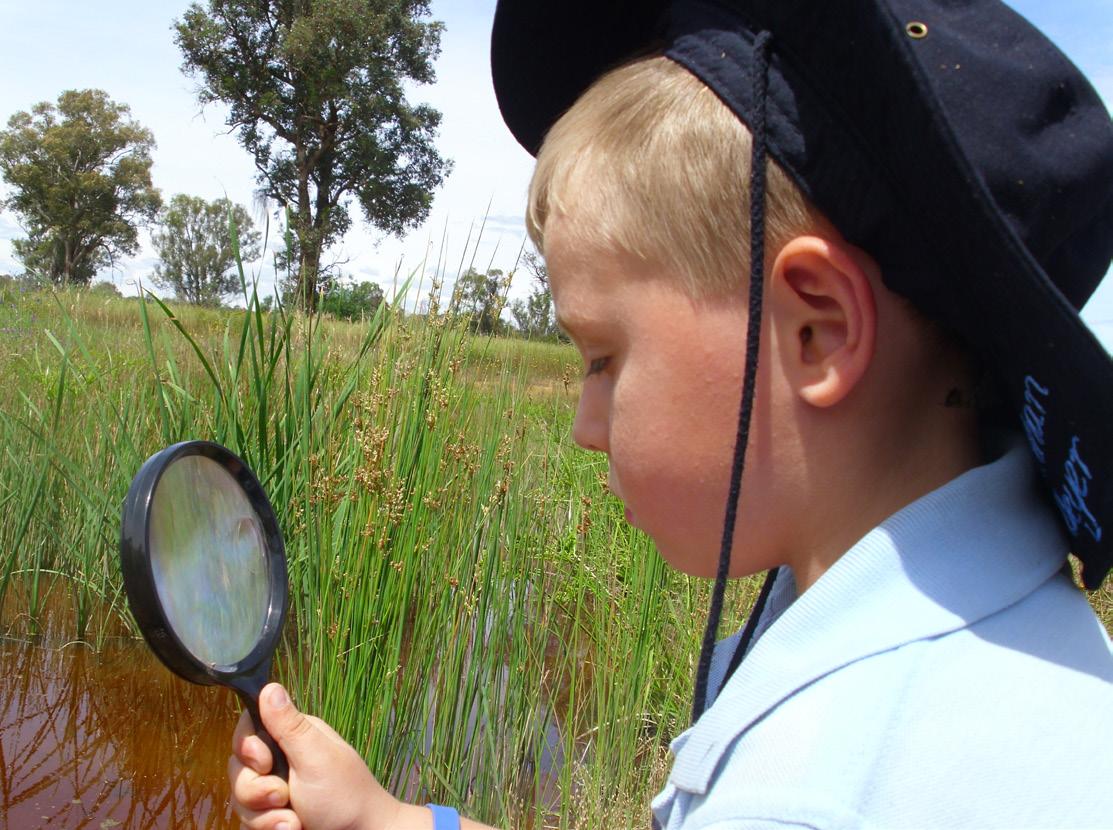
2 minute read
Physical Surrounds
Should Catholic schools develop a physical resource that is an active part of learning in the environment for their students as well as an exemplar of sustainable practices?
Engaging schools and school communities in the natural environment is commonly understood to trigger behaviour change towards sustainability. School grounds are a canvas ready to be explored and developed in support of Education for Sustainability programs and projects.
Advertisement
Maximising natural environment
Whatever the context of the school grounds (including asphalt) there are opportunities to enhance the available natural assets:
Emphasise the value of creating habitat and rich biodiversity in support of a wide range of species
Make a conscious effort to create natural environments and green space in urban settings
School grounds can contribute to reinvigorating the denuded landscapes they sit within
Create a physical environment that feels like it’s driven by wise resource management, an environment that considers natural ecological systems
A natural environment within schoolgrounds can invigorate the senses of students and teachers alike, genuinely contributing to the creation of a positive, joyful and productive school community
Create a nature corridor and food source for local wildlife


Educational Value of Schoolgrounds
The schoolgrounds can also take on a strong role in their educative value by structuring physical and built spaces using the areas outside of classrooms:
Instead of landscaping your schoolground, think about learnscaping it or how can you draw the educational value and opportunity out of your immediate outdoor environment
Undertake the schoolground design with the students by using a design process that takes into consideration every nook and cranny as a rich learning experience
Include interpretation material in your schoolyard about the history of the area, the local species, scientific facts or the installation of art works. Students can develop this material themselves and help to build a fascinating learnscape
Consider your schoolgrounds as an outdoor classroom and then explore how what was once a ‘yard’ can actually add numerous new ‘classrooms’ to your school
Engage with the environment in the curriculum and re-engage your students with the natural world. Take the students (and teachers) outside and explore the world in which they live
Schoolgrounds design/layout
Thoughtful design can turn the school yard into an extraordinary educational opportunity. Consider including: • Reflective areas and meeting places • Waterwise and indigenous plantings • Aboriginal land use • Student driven design by asking them what they want • Curriculum driven design • Use of symbols in schools such as message sticks/artwork • Permaculture zonings • Vegetable gardens • Historical precincts
For students to learn in the environment they must start with their local landscapes. The sustainable projects they develop through their enquiries will begin in their own local environment. The beautification and maintenance of the school grounds allows students the chance to appreciate their environment as well as providing an alternative and effective ‘learnscape’.





